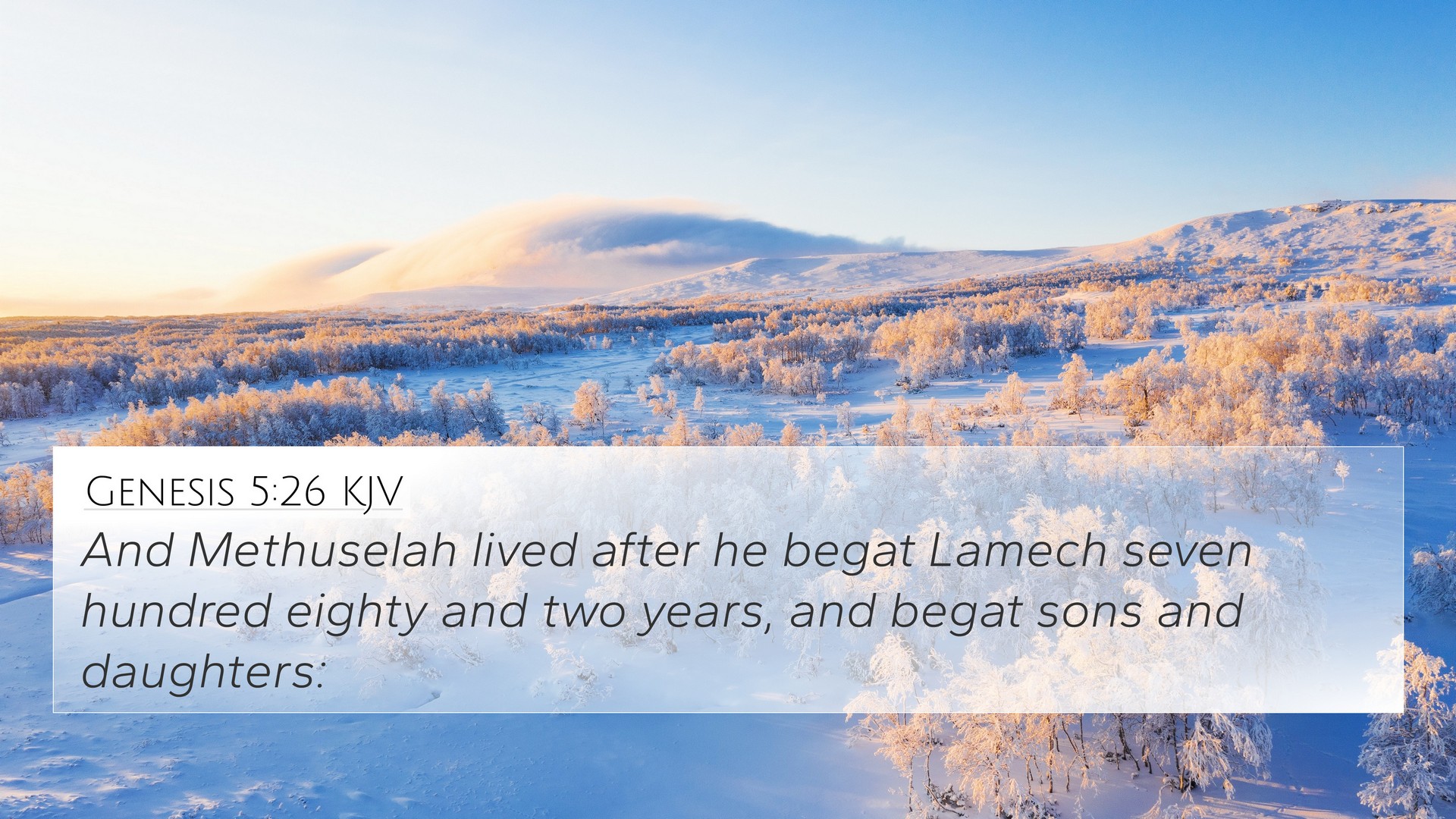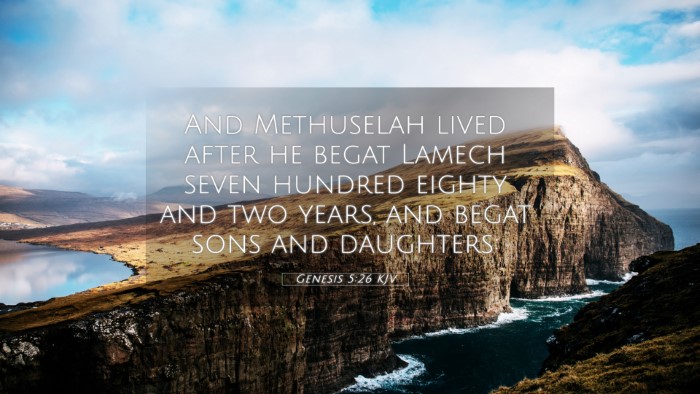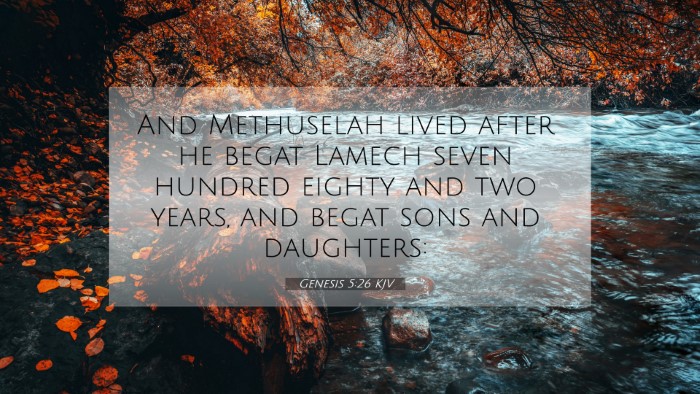Understanding Genesis 5:26
Genesis 5:26 states: "And Methuselah lived after he begat Lamech seven hundred eighty and two years, and begat sons and daughters." This verse provides a crucial insight into the lineage of the patriarchs and emphasizes the longevity of Methuselah. Below, we explore the meaning of this verse and its connections to other Bible verses.
Meaning and Significance
This verse reveals several key points:
- Lineage and Generational Continuity: Methuselah's life spans a remarkable period, establishing a direct link in the genealogy from Adam to Noah, which is foundational in understanding the early Biblical narrative.
- Symbolism of Longevity: The age of Methuselah (969 years) is significant as it symbolizes God's grace and the long-suffering nature of God, offering humanity ample time for repentance before the flood.
- Family Life in Early Humanity: The mention of "sons and daughters" indicates the importance of family in God's creation, highlighting human relationships and divine blessing in procreation.
Commentary Insights
Various public domain commentaries provide further insights into Genesis 5:26:
- Matthew Henry: He emphasizes the importance of Methuselah's time as a measure of God's patience towards humanity's sinful nature. His longevity serves as a divine warning about the impending judgment during Noah's time.
- Albert Barnes: Barnes notes that the verse illustrates the typical life of mankind during that era, drawing attention to the generational flow leading to significant events in salvation history, such as the flood.
- Adam Clarke: Clarke discusses the implications of Methuselah's descendants. He posits that Methuselah's life reflects a divine plan unfolding through successive generations, leading to major Biblical figures like Noah.
Cross-References for Genesis 5:26
This verse is interlinked with several other biblical references that enhance understanding:
- Genesis 5:21-24: The account of Enoch, Methuselah's father, who walked with God, emphasizes the spiritual legacy passed down to Methuselah.
- Genesis 6:3: God’s patience in extending Methuselah’s life correlates with His declaration of limiting human life spans, showcasing a shift in divine governance.
- Genesis 4:26: The introduction of worship practices among descendants leading to Methuselah indicates the rise of religious observance during this timeframe.
- Hebrews 11:5: This verse mentions Enoch's translation, underscoring the spiritual context of Methuselah’s family.
- Luke 3:37: This New Testament genealogy traces Christ’s lineage back to Adam and links to Methuselah, affirming the significance of these early figures.
- 1 Peter 3:20: References to the patience of God and Noah’s time relate to the life of Methuselah, symbolizing the grace extended to a sinning world.
- Matthew 24:38-39: Jesus mentions the days of Noah, connecting it to the timeframe of Methuselah, illustrating human disregard for divine warnings.
Thematic Connections
Genesis 5:26 not only offers a glimpse into Methuselah's life but also serves as a catalyst for exploring broader theological themes:
- Occupational Cross-Referencing: By understanding Methuselah's place in the lineage leading to Noah, readers can link genealogies across Scripture.
- Scriptural Cross-Referencing: This passage invites comparative studies with genealogies found in the Gospels, particularly in the context of redemptive history.
- Thematic Bible Verse Connections: The themes of life, death, and divine patience permeate the scripture and are observable through the cross-referenced verses.
Conclusion
Genesis 5:26 offers rich insights into the significance of Methuselah's lineage and the divine narrative leading to Noah. It serves not only as a historical record but also as a theological reflection on the nature of God's patience and the importance of family in divine plans. When studying this verse, one can uncover various connections through cross-referencing biblical texts, revealing thematic continuity that enhances one's understanding of Scripture.


